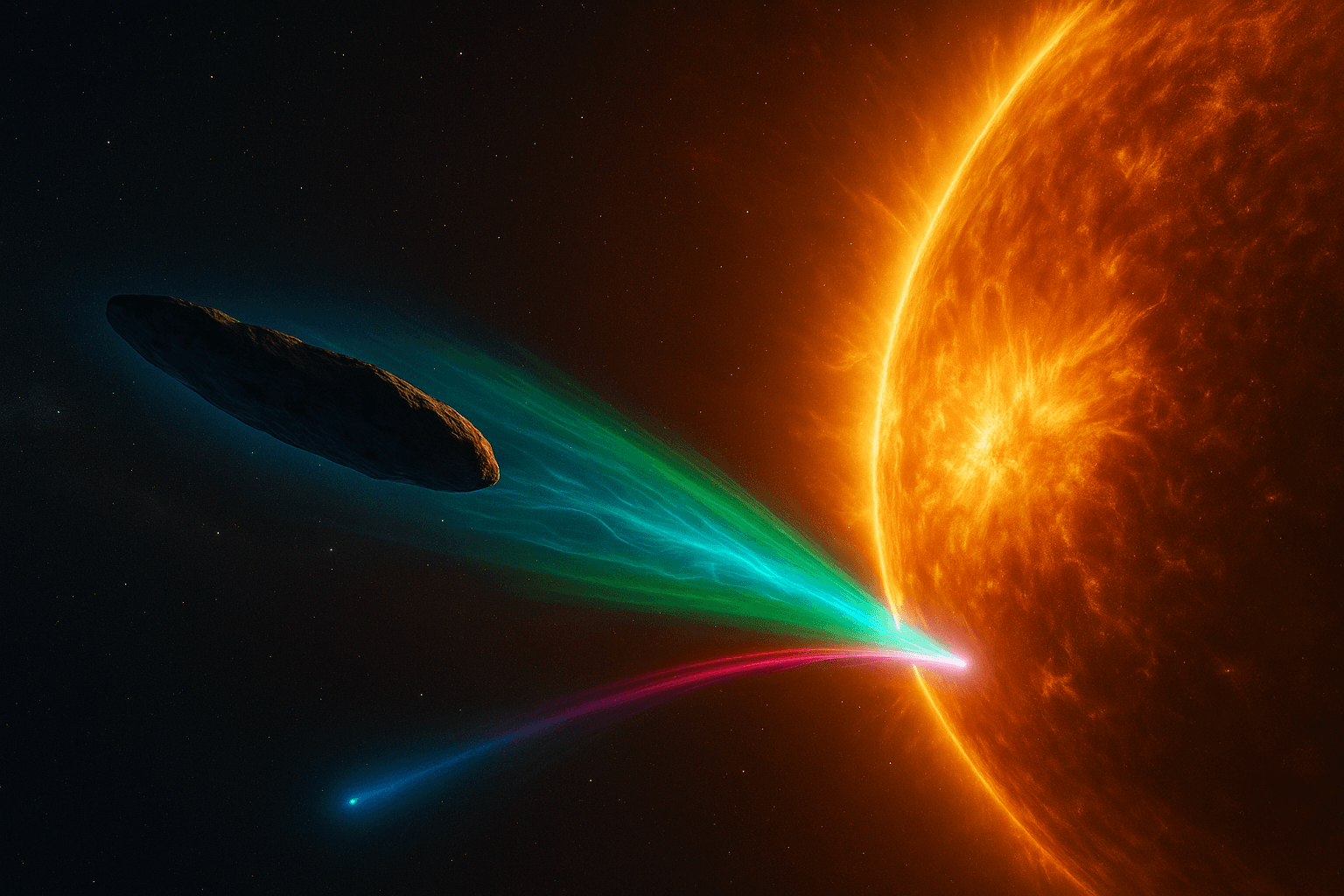The Object That Might Not Be Where It Should Be
On October 21st, 2025, independent observers tracking 3I/ATLAS reported something extraordinary. The interstellar visitor appeared not to be where NASA's JPL Horizons system predicted it should be.
Important Context: The observations discussed in this article come from unofficial tracking data that requires independent verification and refinement. These measurements have not been confirmed by major observatories or official space agencies. We present them as preliminary findings that warrant further investigation.
According to the unofficial tracking data, the discrepancy measured approximately 15.4 arcminutes, which would translate to roughly 1.1 million kilometers of lateral displacement, nearly three times the Earth to Moon distance. Intriguingly, the distance measurement reportedly remained accurate at 2.38 AU (356 million kilometers), suggesting the same object at the same range, but in a different location.
Key Points
- Unofficial data suggests 3I/ATLAS may be 1.1 million km off predicted position
- Gap potentially widening at approximately 0.23 arcminutes per hour
- Would require roughly 3.95 km/s of lateral velocity unexplained by gravity
- Object reportedly 26% dimmer than predicted despite extreme water loss
Follow up observations 19 hours later allegedly showed the gap had widened by over 4 arcminutes. If verified, this would suggest the object isn't just off course but potentially diverging from gravitational predictions at a measurable rate.
The Maneuvering Question: If confirmed, maintaining this divergence would require approximately 3.95 km/s of lateral velocity that standard orbital mechanics cannot explain. For a natural comet, outgassing typically produces velocity changes of only 0.1 to 0.4 km/s, far below what's being reported.
Geometric Emissions and Dimming Mysteries
The reported position anomaly isn't the only puzzle in the unofficial observations. While JPL predicted 3I/ATLAS should appear at magnitude 14.833, observers allegedly measured it at 15.12, making it 26% dimmer than expected. This would be particularly strange for an object that JWST confirmed is losing 25 kilograms of water every second, one of the most active comets ever observed.
The visual appearance adds another layer of mystery. While comparison objects like the star Spica and comet C/2025 R2 SWAN showed perfect circular symmetry, 3I/ATLAS allegedly displayed geometric patterns with distinct color zones: green outer regions from cyanogen molecules, blue concentrated core from ionized nickel, and pink directional glow from excited hydrogen.
This spatial arrangement, with colors separated into geometric zones rather than smoothly blended, could resemble controlled plasma more than chaotic outgassing. Combined with the complete absence of X-ray emissions despite massive activity, the pattern might suggest something unusual about how this object operates (we have covered 3I/ATLAS's anomalous chemistry in detail here).
Eight Days Until the Critical Test
On October 29th, 2025, at 11:36 UTC, 3I/ATLAS reaches perihelion, its closest approach to the Sun at 1.356 AU. On that exact day, it will be positioned directly behind the Sun from Earth's perspective, completely hidden and unobservable.
If 3I/ATLAS were hypothetically a technological object rather than a natural comet, this solar conjunction would represent the most fuel efficient window for arrival maneuvers. Any course corrections made while hidden behind the Sun would go undetected, allowing the object to emerge on November 3rd in a potentially different trajectory.
The November 3rd Verification: When 3I/ATLAS emerges from behind the Sun, astronomers will immediately measure its trajectory and compare it to predictions. This will be the critical moment to verify or refute the unofficial tracking claims. If confirmed position offsets persist, increase, or show evidence of course corrections made during conjunction, it would provide compelling evidence requiring explanation beyond natural processes.
Whether these preliminary observations prove accurate or turn out to be tracking errors, the November 3rd emergence will provide definitive data. Official observatories and space agencies will have the opportunity to confirm or debunk these claims with precision measurements.
The unofficial data suggests a widening gap, the clock is counting down, and in eight days we'll know if these observations hold up to scientific scrutiny.
Sources and Research
This article draws from unofficial real-time tracking observations documented by EarthExists on October 21, 2025. These measurements have not been independently verified by major observatories. Official context comes from JPL Horizons ephemeris data (updated October 10, 2025), Keck Observatory spectroscopic analysis (August 2025), and JWST water production measurements. Readers should await confirmation from official sources before drawing conclusions. For our previous coverage of 3I/ATLAS's anomalous chemistry and hypothetical technological possibilities, see related articles below.
